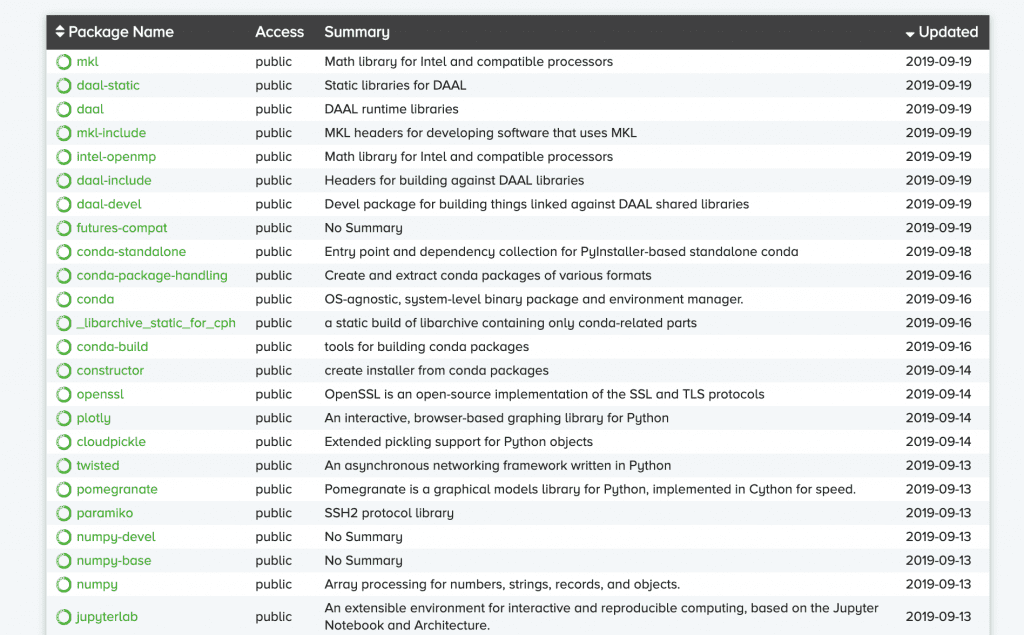Anaconda is a free and open-source distribution of the programming languages Python and R (check out these Python online courses and R programming courses). The distribution comes with the Python interpreter and various packages related to machine learning and data science.
Basically, the idea behind Anaconda is to make it easy for people interested in those fields to install all (or most) of the packages needed with a single installation.
I get it, Anaconda saves time, that’s it?
Imagine a scenario where a co-worker is joining your data analysis project. You show her what your program looks like, she tries to run it on her own system, but gets the following error:
Traceback (most recent call last):
File "analyze_data.py", line 5, in <module>
import pandas as pd
ImportError: No module named pandasIt looks like your co-worker does not have all the required packages installed to run your program. If both of you would have Anaconda installed you wouldn’t run into this kind of issue. The distribution ensures that both of you have the same packages and dependencies installed, even if one of you is running windows and the other macOS.
In simple terms, you can think of Anaconda as an easy way to install a Python interpreter + various data science packages or 🐍➕📦📦=👍
What’s included with Anaconda?
- An open-source package and environment management system called Conda, which makes it easy to install/update packages and create/load environments.
- Machine learning libraries like TensorFlow, scikit-learn and Theano.
- Data science libraries like pandas, NumPy and Dask.
- Visualization libraries like Bokeh, Datashader, matplotlib and Holoviews.
- Jupyter Notebook, a shareable notebook that combines live code, visualizations and text.

Anaconda vs. Miniconda
If you have the feeling that installing Anaconda with all its packages is overkill because you still live in 1995 and your computer space is extremely limited 💾 consider giving Miniconda a shot.
Miniconda only includes the Python interpreter and the package manager Conda so the choice of which packages to install is up to you.
Don’t know which to choose? Go with Anaconda.
Still doesn’t make sense? That’s okay! Check out our article on how to learn Python.
